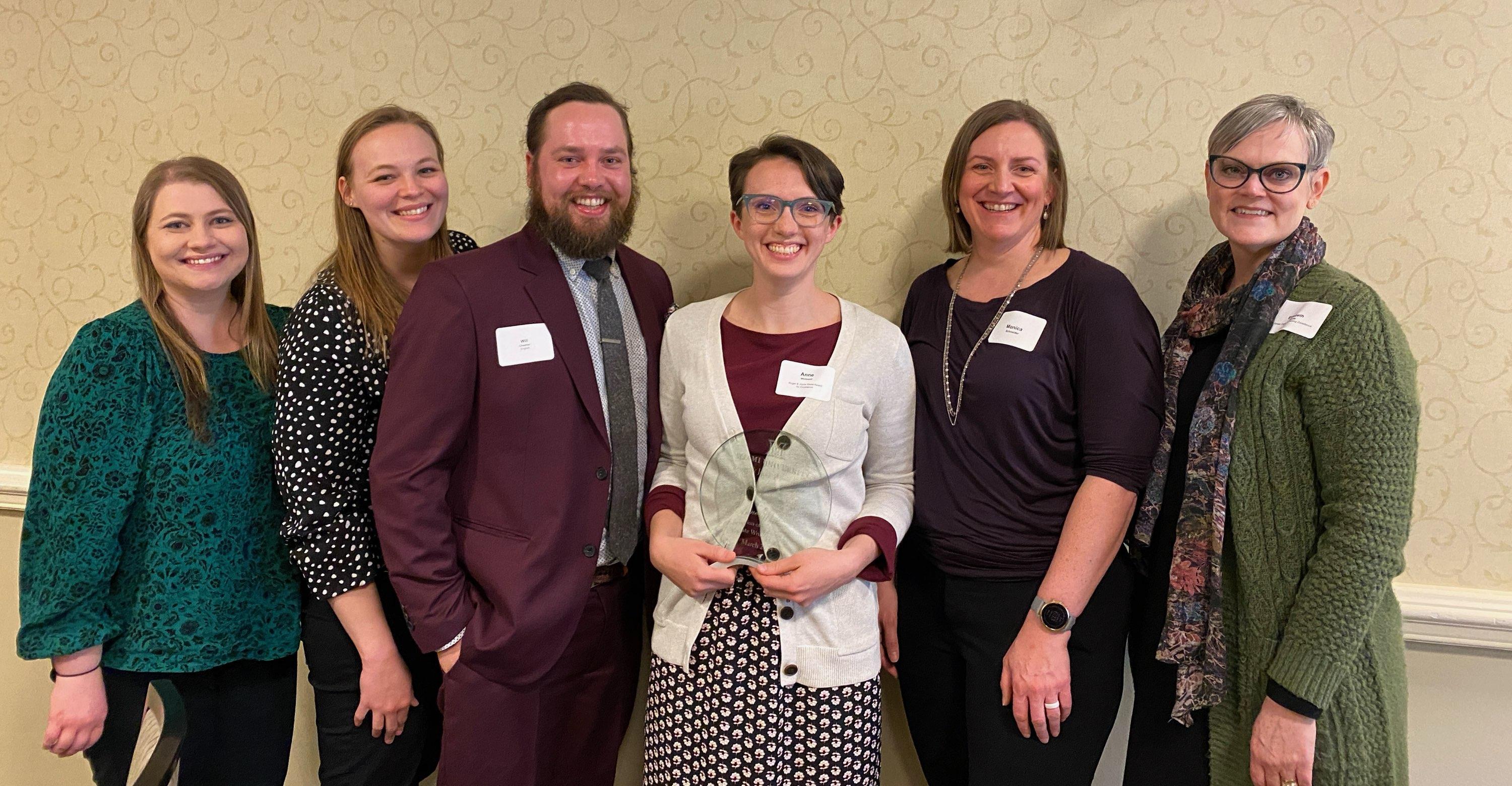Announcing the Winners of the Spring 2024 HWC Writing Contest
We are thrilled to announce the winners of the Spring 2024 Howe Writing Center Writing Contest! This semester’s contest invited Miami writers to produce a poem or poem sequence inspired by a work of children’s literature in which nature plays a role.
Announcing the Winners of the Spring 2024 HWC Writing Contest
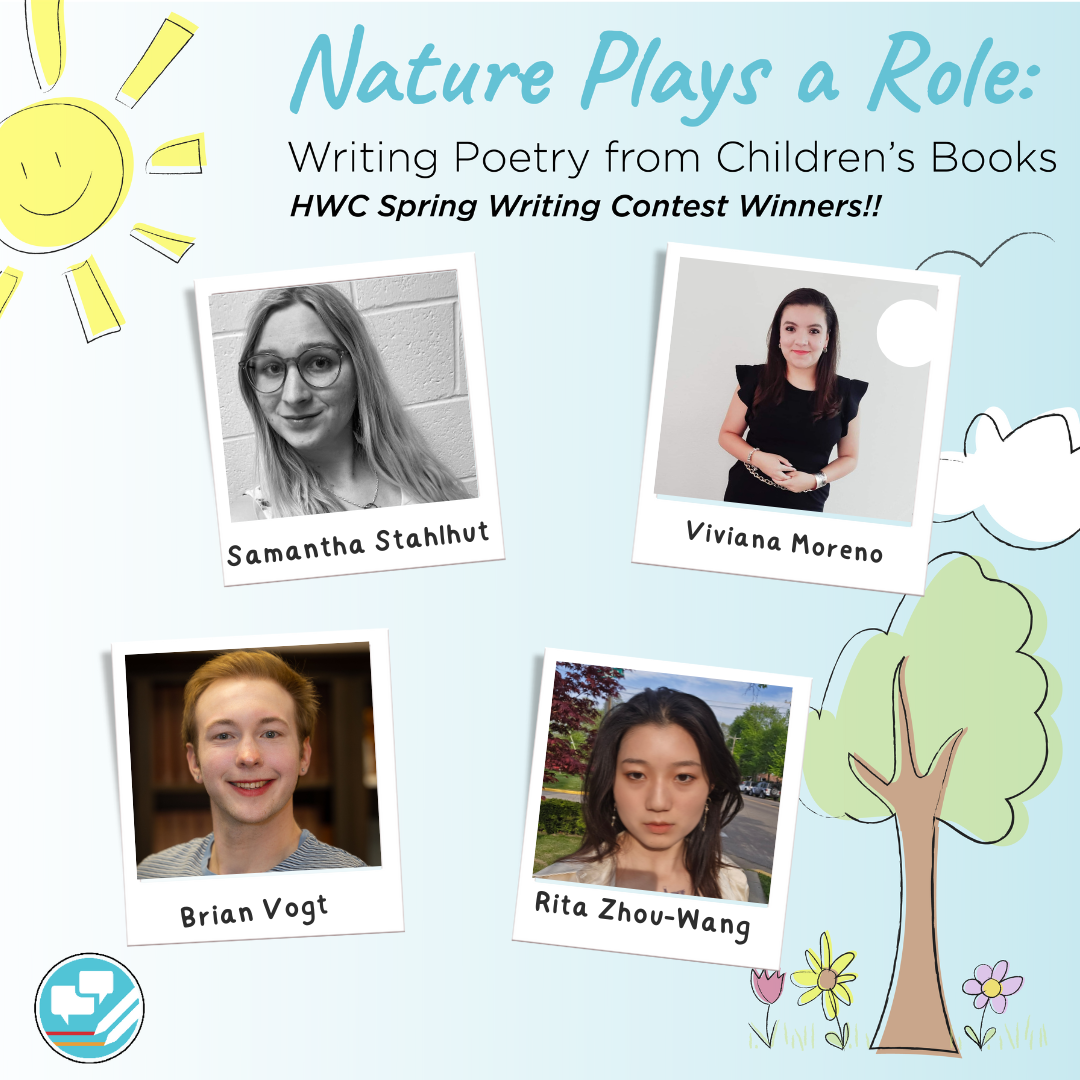
Every semester the Howe Writing Center holds a creative writing contest, with the mission to cultivate a culture of writing that honors a range of voices and perspectives at Miami. The contest is open to submissions from any Miami undergraduate or graduate student writer.
In celebration of National Poetry Month, this semester’s contest invited Miami writers to produce a poem or poem sequence inspired by a work of children’s literature in which nature plays a role. Children’s books have long helped young readers to engage with nature through both images and words. Participants were not only tasked with selecting a work of children’s literature to inspire their poetry, but also to reflect on their process of engaging with the piece through a writer's note.
Congratulations to our winners and thank you to everyone who submitted work for the contest!
Here are this year’s winners:
- 1st Place: An Autobiography in Four Parts by Samantha Stahlhut
- 2nd Place: Nature’s Reflection by Viviana Moreno
- 3rd Place: The Lorax Sells Out! By Brian Vogt
- Staff Pick: “Can you hear the music?” by Rita Zhou-Wang
Samantha Stahlhut
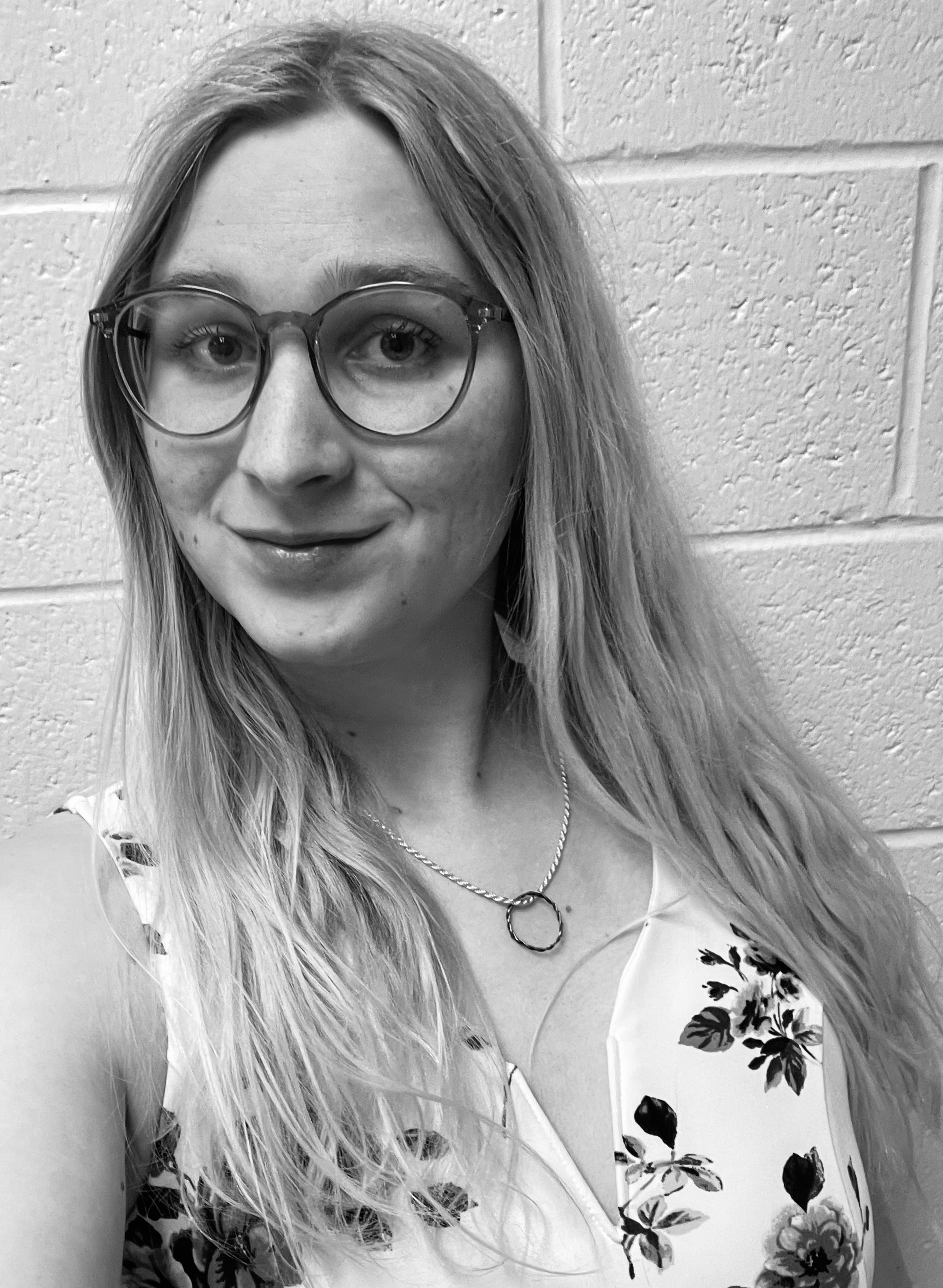 I know that if my wife and I have children, we will read Town Is by the Sea by Joanne Schwartz to them. I did not expect a children’s book to make me cry, but this one did. It is a beautifully understated story, in both illustration and prose. As the daughter of a sailor, my heart melted with each image of the father under the sea. My dad was often away at sea, and would sometimes be gone for months at a time. And like the boy, the sea was one of the few constants in my life—at each navy base we were stationed, I was never too far away from it and it was never too far away from me.
I know that if my wife and I have children, we will read Town Is by the Sea by Joanne Schwartz to them. I did not expect a children’s book to make me cry, but this one did. It is a beautifully understated story, in both illustration and prose. As the daughter of a sailor, my heart melted with each image of the father under the sea. My dad was often away at sea, and would sometimes be gone for months at a time. And like the boy, the sea was one of the few constants in my life—at each navy base we were stationed, I was never too far away from it and it was never too far away from me.An Autobiography in Four Parts
I.It goes like this—
home is a saltwater chimera with
ports of call in three continents.
I’m a girl lost at sea; at home with
the jellyfish that die on the beach.
II.
It goes like this—
my father sails with the Navy fleet;
machine-made waves breaking in a
path my blood has long followed in
bitter hopes of a brighter life.
IV.
It goes like this—
I break tradition; in landlocked Ohio
I stare at the silver of the night sky. I
see constellations of plankton,
bioluminescent in a dark sea.
III.
It goes like this—
she takes me to the Atlantic; on
her knees she asks to marry me.
Her lips taste of salt and sand; I
learn that she can be home.
Samantha Stahlhut is an MFA student at Miami University and a former middle school teacher. Under the name Samantha Sapp, her work has appeared or is forthcoming in several literary journals, including Sinister Wisdom, Mount Hope Magazine, and Muleskinner Journal. When she's not writing, she can be found wandering the woods of Western Campus.
Viviana Moreno
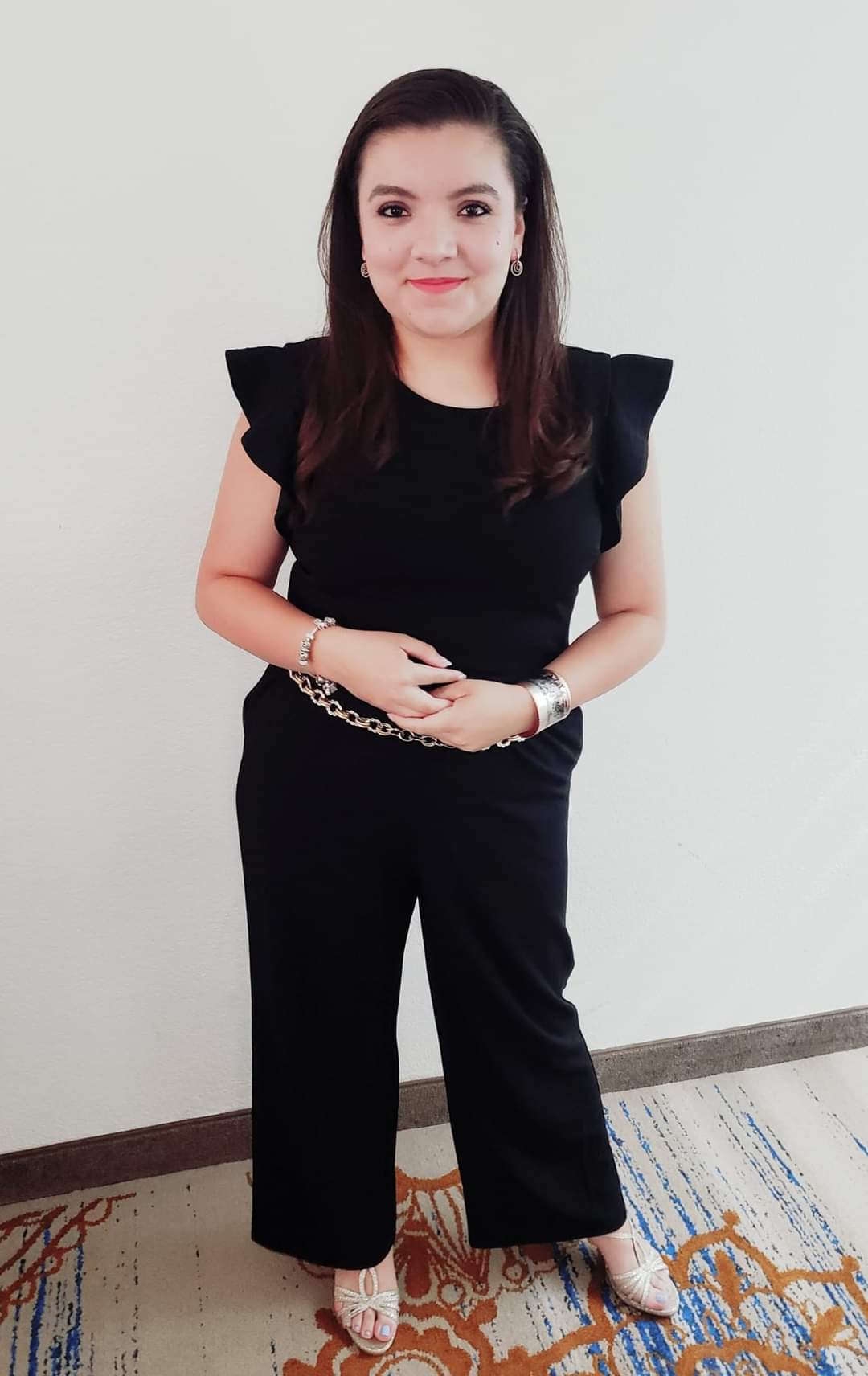 For me, this contest came with perfect timing. I am nearing the end of my time with Miami University's Project Dragonfly AIP program and will be graduating in December. My Master Plan (thesis equivalent) centers around using creative writing methods to teach those interested about natural wonders and current issues surrounding them. I have used creative writing as a channel for change and education and have been fortunate enough to find a program that allows me to mesh science and art together.
For me, this contest came with perfect timing. I am nearing the end of my time with Miami University's Project Dragonfly AIP program and will be graduating in December. My Master Plan (thesis equivalent) centers around using creative writing methods to teach those interested about natural wonders and current issues surrounding them. I have used creative writing as a channel for change and education and have been fortunate enough to find a program that allows me to mesh science and art together.
I was inspired by Jan Brett's book, Mossy. I loved the idea of a turtle having a garden, making friends, and feeling emotions like sadness and loneliness for its effectiveness in connecting the readers to nature. By anthropomorphizing the character of Mossy, readers can glimpse into the world Brett created in Lilypad Pond and with the friends Mossy makes along the way.
Nature's Reflection
*Writer's Note: the name Lilypad Pond came from the children's book, Mossy, by Jan Brett
Viviana Moreno is a Florida-based Project Dragonfly student pursuing her MA in Biological Sciences. Her master's coursework centers around the theme of using creative writing as a channel for change and education in science and conservation. She has previously been published in Popshot Quarterly, hosted poetry walks in her community, and has a blog where she keeps all her writing projects.
Brian Vogt
 Out of the selected texts, Mossy stood out because of the way the book condensed complicated themes into an accessible form. The story of Mossy the turtle being taken from her home and displayed in a museum reminded me of Jennifer Neeley's book Against Sustainability: Reading Nineteenth-Century America in the Age of Climate Crisis. Neeley critiques preservationist ideologies which "hinge on a growing appreciation of the aesthetic value of indigenous 'wild' spectacles for an increasingly 'civilized' white US population."
Out of the selected texts, Mossy stood out because of the way the book condensed complicated themes into an accessible form. The story of Mossy the turtle being taken from her home and displayed in a museum reminded me of Jennifer Neeley's book Against Sustainability: Reading Nineteenth-Century America in the Age of Climate Crisis. Neeley critiques preservationist ideologies which "hinge on a growing appreciation of the aesthetic value of indigenous 'wild' spectacles for an increasingly 'civilized' white US population."
My poem explores similar themes of exploitation and preservation through the Lorax, a literary figure whose opposition to extractive capitalism has been commodified via book sales, movies, and merchandising. This prompted a question: How do we as artists and writers fight against exploitative systems when our rebellion is commodified and thus becomes part of the problem?
The Lorax Sells Out!
I am the Lorax. I speak for the treesAnd today has been a good day for me’s
I speak for the trees, for the trees have no tongues
Which means I can take their moneys and runs
Zil from marketing called me on Zoom
With a big idea that's sure to go boom!
It's a schlong-zinger decorated with a picture of myself
Guaranteed to replace all those dumb thneeds on the shelf
Zil told me with pride:
“They’re made in sweatshops in China
To be sold far and wide
Including North Carolina!”
I’m not in business just for me’s
I have to fund my sanctuary for Truffula trees
It’s a small parcel
But hey it's something!
It's better to save some trees
Than sit back and do nothing
Just got off the phone with Sam Predation
He’s an agent from Illumination
I’ve got a movie deal in the works
Which feels as good as taking percs
The profits will be invested in stock
Shares in the TruAx lumber bloc
A few trees are selected
To be protected
While others are selected
To be collected
By Super Axe Hackers
Some have accused me of selling out
They say money's all I'm about
Before you protest, recall:
That business is business
No matter how small!
Brian Vogt is a senior honors student with majors in creative writing, individualized studies: found object art, and art therapy. As an artist, Brian is driven to make their art process as environmentally conscious as possible by turning waste into art. They also believe in giving back to the community, which is why they facilitate found object art workshops at the Hamilton Lane Public Library to share the therapeutic and environmental benefits of this artistic medium with underprivileged kids. Brian’s artwork has been displayed at the Western Center for Social Impact and Innovation, the Richard and Carole Cocks Art Museum, the Oxford Community Art Center, the Annex Gallery in the Pendleton Art Center, and Artspace Hamilton Lofts and Resident Gallery. Brian had a short story published in Brainchild magazine in 2021, and is currently working on a script and a novel.
Rita Zhou-Wang
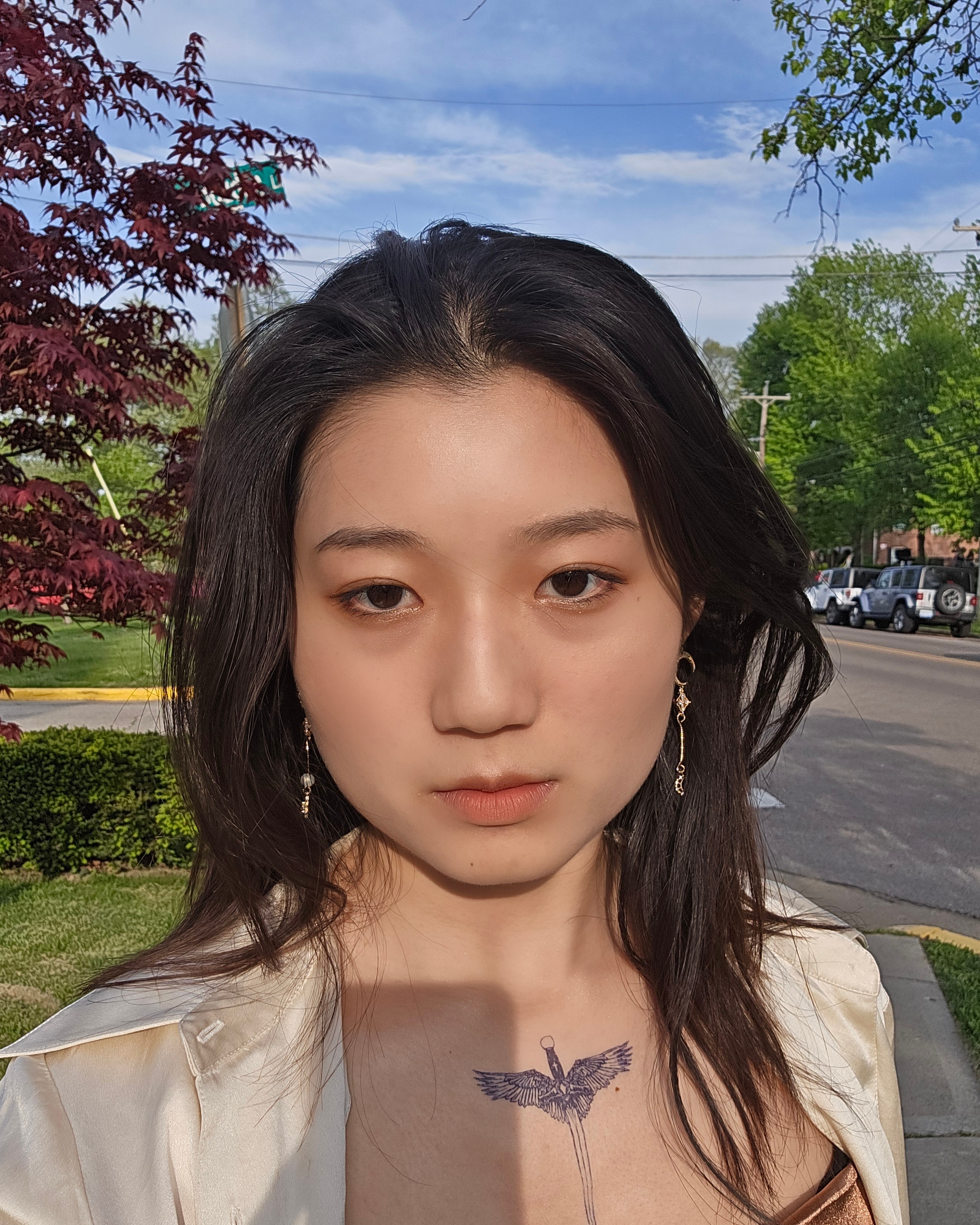 I used elements from the books The Night World, A Place to Grow, and How to Heal A Broken Wing. The use of colors and art style drew me in The Night World. For A Place to Grow I enjoyed the thematic associations with seeds and stone. For How to Heal A Broken Wing, I liked the contrast between the man made skyscrapers and the pigeon in the story, contrasting between modernity and nature. Each story relates to each stanza in that order.
I used elements from the books The Night World, A Place to Grow, and How to Heal A Broken Wing. The use of colors and art style drew me in The Night World. For A Place to Grow I enjoyed the thematic associations with seeds and stone. For How to Heal A Broken Wing, I liked the contrast between the man made skyscrapers and the pigeon in the story, contrasting between modernity and nature. Each story relates to each stanza in that order.
My title “Can you hear the music?” is a reference to the Oppenheimer movie. This title ties everything together, as seen by the numbers on the left.
"Can you hear the music?"
6:00 Sun rises and falls380-700 Falls upon eyes
6.63 × 10-34 Eyes see seeds
8.314 Seeds grow and flow
9.81 Flow down to the ground
55.845 Ground to make metal
1200 Metal chooses the king
1945 King is just man
6:00 Man is sun
I'm Rita and I'm a junior chemistry major and art history minor. My piece was inspired by a quote from Niels Bohr in the new Oppenhiemer film, Frank Ocean's unreleased song "Wiseman," and 3 of the children's book selected by the HWC staff. Each of the numbers refer to either a time, measurement/constant, or date.
